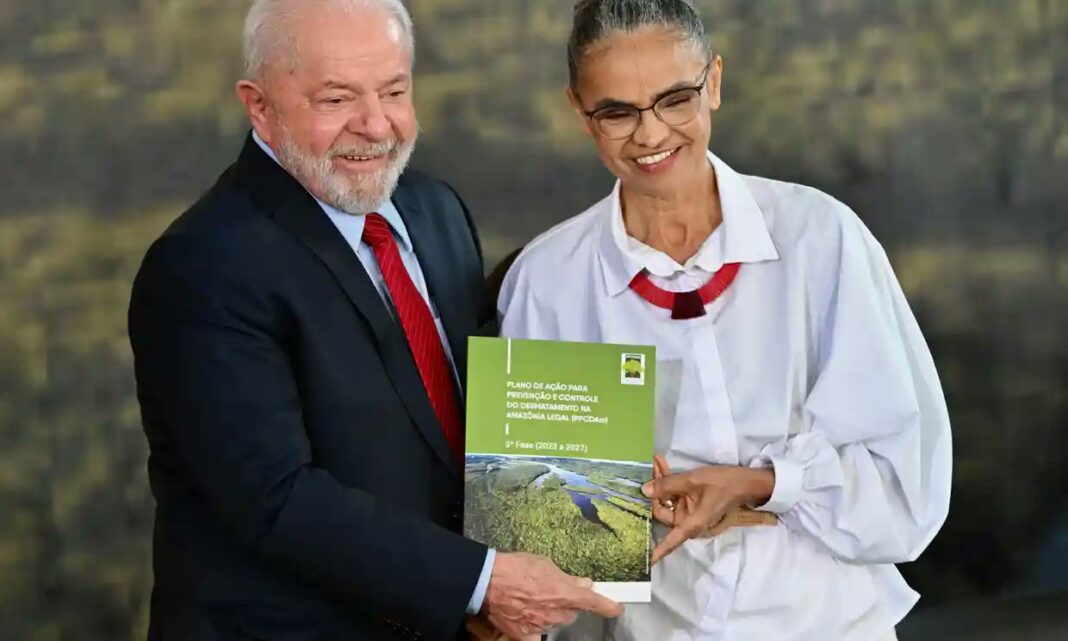The countries connected to the Amazon face pressure from the EU to combat deforestation or face trade restrictions.
As reported by Wood Central in June, Brazilian President Luiz Inácio Lula da Silva is pushing to eliminate deforestation in the Amazon by 2030 as part of an international pledge to protect the environment.
Last month, according to Albina Ruiz, the Peruvian Environment Minister, the eight South American nations that make up the Amazon rainforest approved the president’s plan.
“There is consensus regarding zero deforestation,” Ruiz said in a press conference in Lima.

The eight countries will formally meet in Peru later this month to ratify the historic commitment.
However, the countries are divided over the impact of banning oil and gas drilling in the region.
Colombian President Gustavo Petro argues that phasing out fossil fuels is crucial for protecting the forest, but Lula supports oil drilling in the region.

If fossil fuels are kept underground, alternative activities must be developed to sustain the economies of Amazon countries.
Suggestions include promoting greener farming and sustainable forest management and implementing schemes to compensate farmers and indigenous people for their conservation efforts financially.
Under the Brazilian president’s plan, satellite imagery will identify illegal logging, ranching, and mining operations.
For example, government databases using financial intelligence could be deployed to track money flow from unsanctioned operations in the Amazon rainforest.
NASA offers the NISAR satellite to combat Brazil’s deforestation
Last month, NASA administrator Bill Nelson announced a ground-breaking satellite that could greatly assist in monitoring and preventing deforestation in the Amazon.
During his visit to the National Institute of Space Research (INPE) in Brazil, Nelson introduced the satellite named NISAR (NASA-ISRO Synthetic Aperture Radar), a joint mission between NASA and the Indian Space Research Organisation (ISRO).
Slated for launch in India, NISAR will capture real-time images of what is happening beneath the forest canopy.
‘This advanced technology will enable us to observe the undergrowth of the jungle, making it possible to detect if areas have been burned,’ Nelson stated at a news conference at the INPE.
This ability to ‘see’ through the dense forest canopy, even under cloud cover, offers a significant breakthrough in forest monitoring technology.”
Global impact as EU passes law banning deforestation products
The Amazon countries are under increased scrutiny following the introduction of the European Union Deforestation-free Regulation (EUDR).
The new law bans the sale of coffee, cocoa, cattle, palm oil, soy and wood connected to deforestation. Deforestation accounts for up to 10% of worldwide greenhouse gas emissions, according to the UN Global Forest Goals report, and the loss of biodiversity endangers the existence of millions of species.
A recent report identified that more than 50% of deforestation occurs in 5% of producing areas – including in the Amazon, Cerrado and Gran Chaco biomes.
Brazil is a significant exporter of agri-food products to the EU, with the new laws putting the multi-billion dollar trade at risk.
The Amazon is responsible for 40% of the world’s deforestation.
Last month, Wood Central reported that Brazil was responsible for 43% of the world’s total deforestation in 2022.

In 2022, the primary loss in Brazil increased by 14%.
In Amazonas state, which is home to over half of Brazil’s intact forests, the rate of deforestation has almost doubled over the past three years.
Deforestation in the Amazonas, Brazil, over the last 20 years.
According to data from the Brazilian Government, deforestation in the Brazilian section of the Amazon dropped by 33.6% in the first six months of President Luiz Inácio Lula da Silva’s term.







